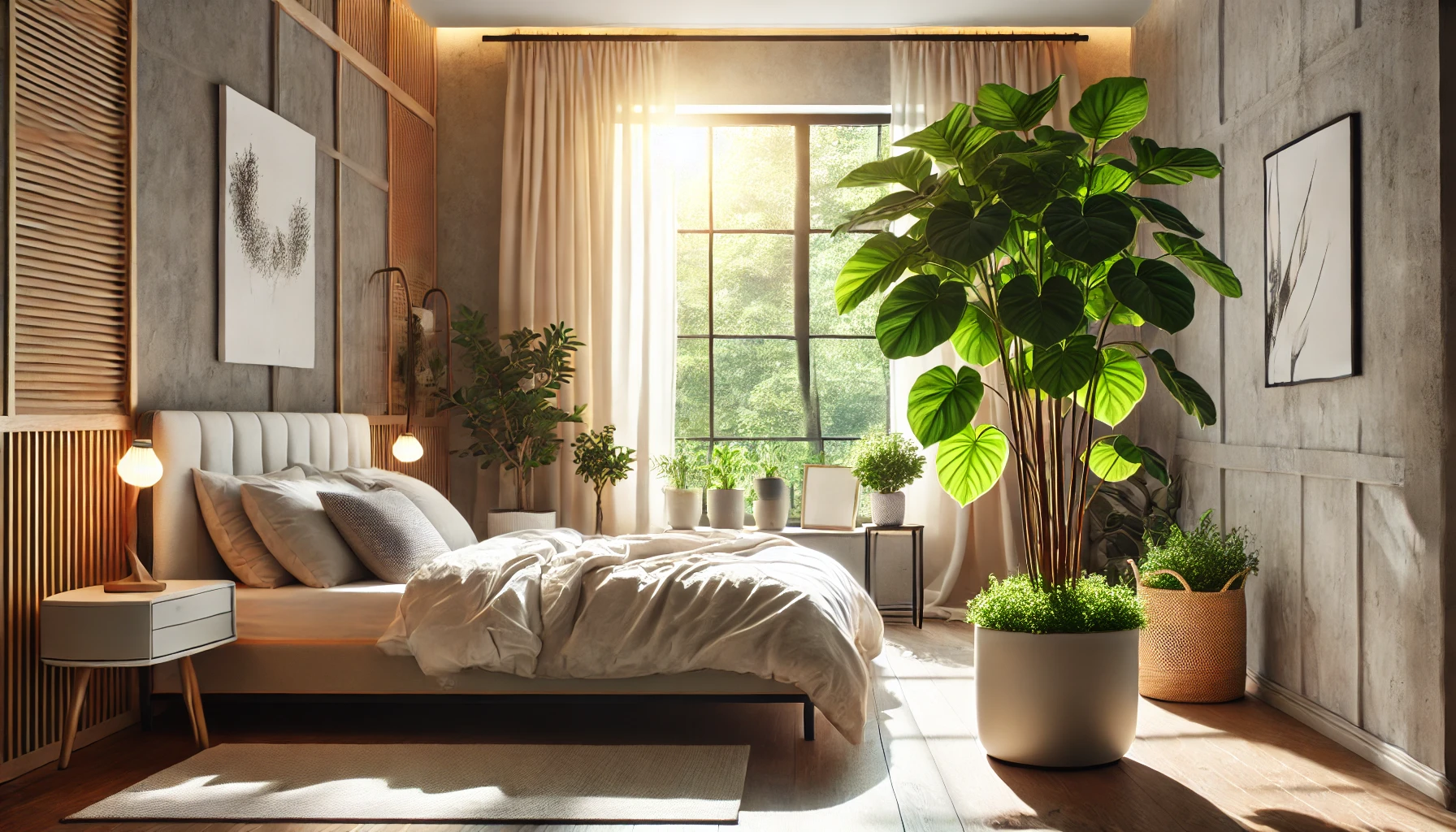Ficus are not only a wonderful decoration for your interior but also a useful assistant in creating a healthy microclimate in the bedroom. In this article, we will explore the benefits of placing a ficus in the bedroom, how to care for it properly, and what to pay attention to.
Introduction
Ficus belong to the carrot family and have gained popularity due to their dense, green leaves and ability to beautify any space – from offices to home interiors. However, in addition to their aesthetic value, ficus can positively impact indoor air quality, making them ideal for placement in the bedroom.
Main Benefits of Placing a Ficus in the Bedroom
1. Air Purification
- Photosynthesis: Ficus convert carbon dioxide into oxygen during photosynthesis, which helps improve air quality.
- Absorption of Harmful Substances: Ficus effectively remove pollutants from the air, such as:
- Formaldehyde
- Benzene
- Toluene
These substances can come from furniture, paints, carpets, and other materials.
2. Increased Humidity
- Natural Humidification: Plants release moisture through their leaves, which can be especially beneficial in dry air conditions or during the heating season. This helps prevent dry skin and irritation of the respiratory tract.
3. Positive Impact on Mood and Relaxation
- Aesthetics and Calmness: The natural greenery of the ficus creates a soothing atmosphere that promotes relaxation and improves sleep quality.
- Psychological Comfort: Having plants in the bedroom can reduce stress levels and help you feel connected to nature even in urban settings.
Optimal Conditions for Placing a Ficus in the Bedroom
Light
Ficus require sufficient light for normal growth:
- Natural Light: Place the plant near a window or in a spot with bright, but diffused light.
- Artificial Lighting: If there is not enough natural light in the bedroom, use grow lights or bright general lighting.
Temperature and Humidity
- Optimal Temperature Range: Ficus grow best at temperatures between +18°C and +24°C.
- Humidity Control: Maintain moderate humidity levels. Check to ensure there is neither excessive moisture nor dryness in the soil.
Placement and Safety
- Pet Safety: Some types of ficus can be toxic to cats and dogs. If you have pets, consider placing the plant in an inaccessible location or choose non-toxic varieties.
- Ventilation: Maintain good ventilation in the bedroom to promote a healthy ecosystem.
Caring for a Ficus in the Bedroom
Watering
- Regular Watering: Water the plant regularly, but avoid both drying out and overwatering the soil.
- Moisture Check: Before watering, check if the top layer of soil is dry. Too much moisture can lead to root rot.
Leaf Cleaning
- Dust Removal: Wipe the leaves with a damp cloth or soft brush to remove dust. This helps the plant “breathe” better and promotes photosynthesis.
Pruning and Maintenance
- Trimming Damaged Leaves: If you notice dry, yellowed, or wilted leaves, trim them to stimulate new growth.
- Fertilizing: Use liquid fertilizer for ornamental plants once or twice a month during the growing season to support healthy growth.
Useful Tips for Integrating Ficus into Bedroom Decor
- Size and Type of Pot: Choose a pot that matches the size of the plant. It should have drainage holes to prevent water stagnation.
- Companion for Other Plants: Ficus pairs well with other houseplants, creating a harmonious green corner.
- Stylistic Accents: Use decorative stands or stylish pots that match the overall design of your bedroom.
Conclusion
Keeping a ficus in the bedroom is a great way to improve air quality, increase humidity, and create a calming atmosphere that promotes better sleep and overall well-being. By following simple care guidelines and considering the plant’s needs for light and temperature, you can enjoy all the benefits of this green composition. However, if you have pets, it is important to consider the potential toxicity of some ficus species and place them in a safe location.
Integrate nature into your space and enjoy the benefits that ficus offers not only from an aesthetic but also from a functional perspective.
Additional Tips:
- Monitoring Plant Health: Regularly inspect the ficus for pests or signs of disease.
- Experiment with Placement: If you are unsure whether a certain spot in the bedroom is suitable, try moving the plant for a while to see how it reacts to changes in conditions.
- Consulting Experts: If you encounter difficulties in caring for the plant, do not hesitate to seek advice from specialists or gardening centers.
